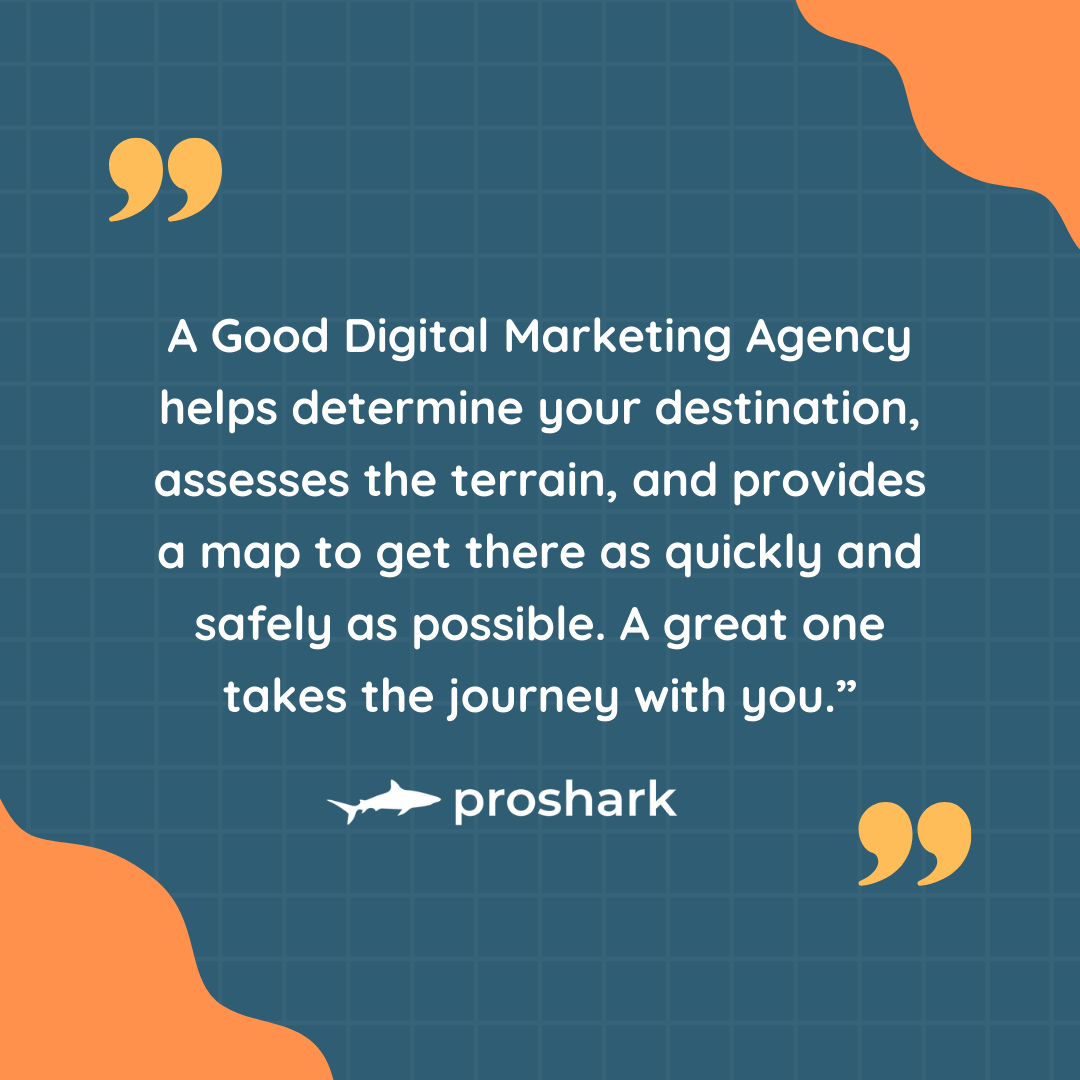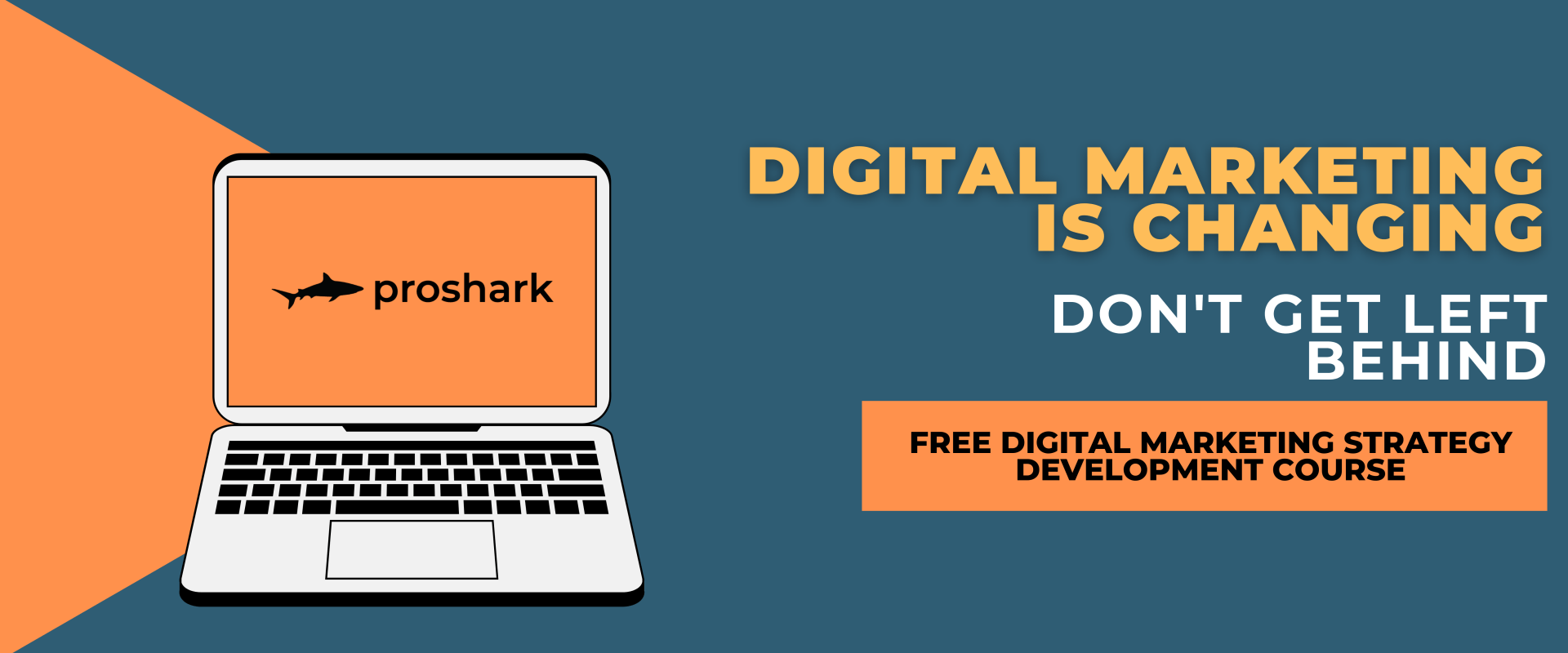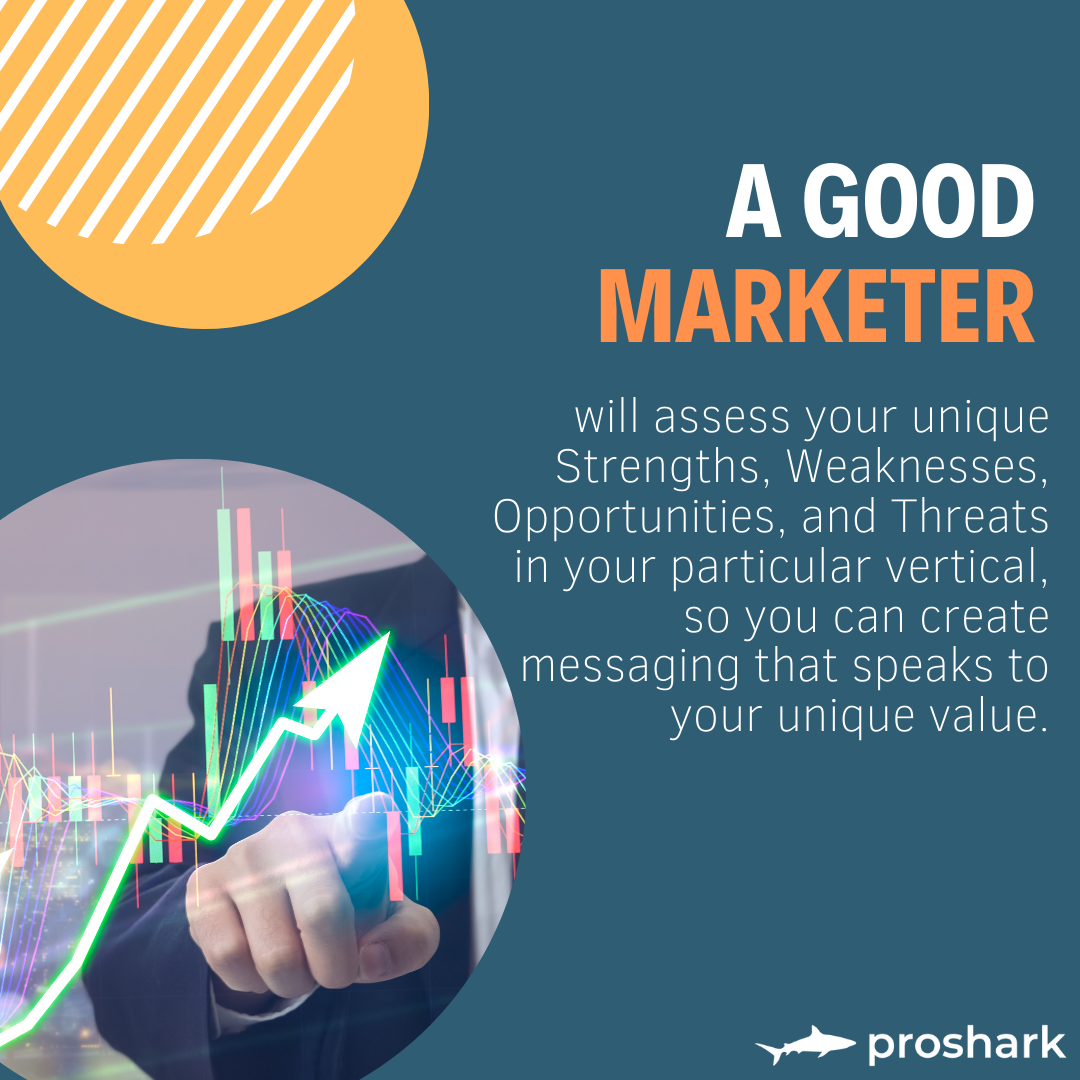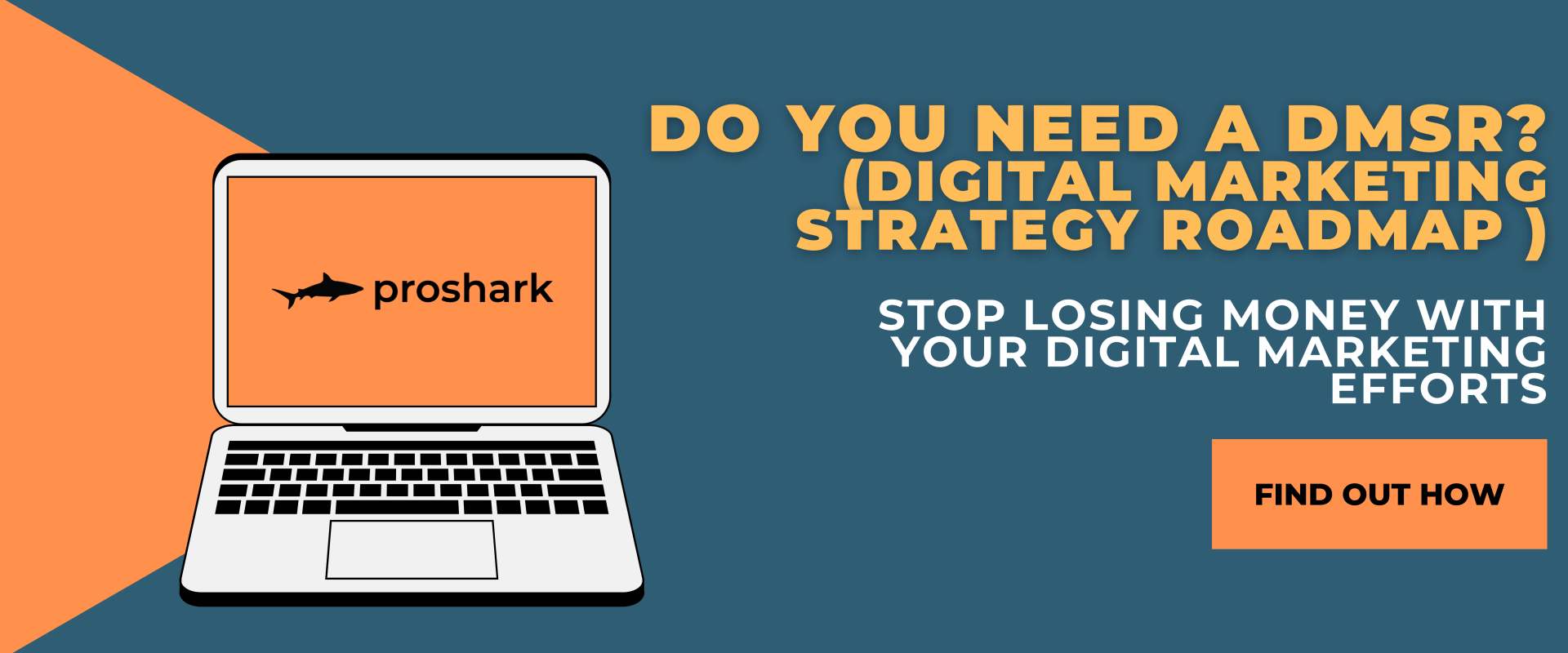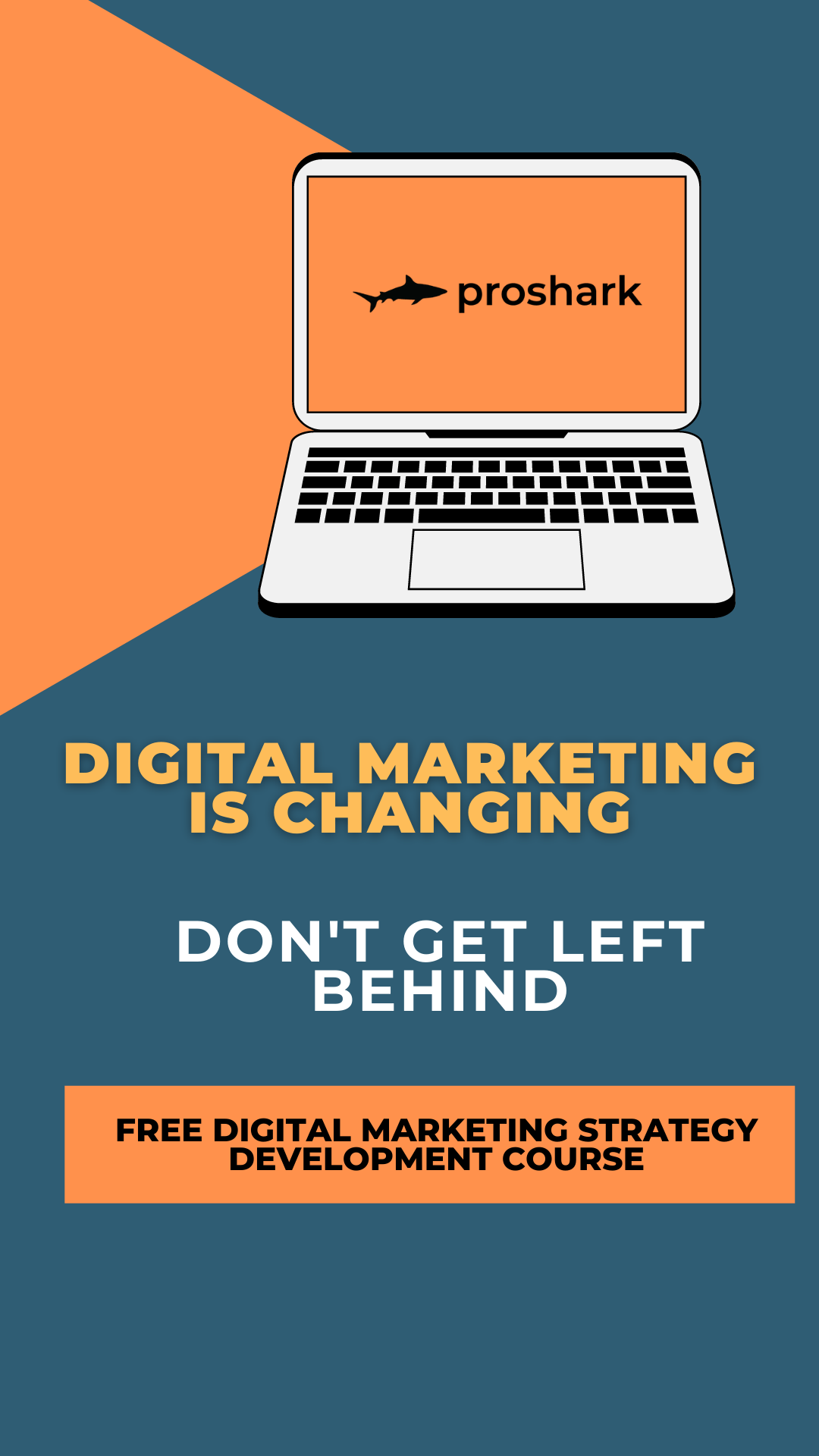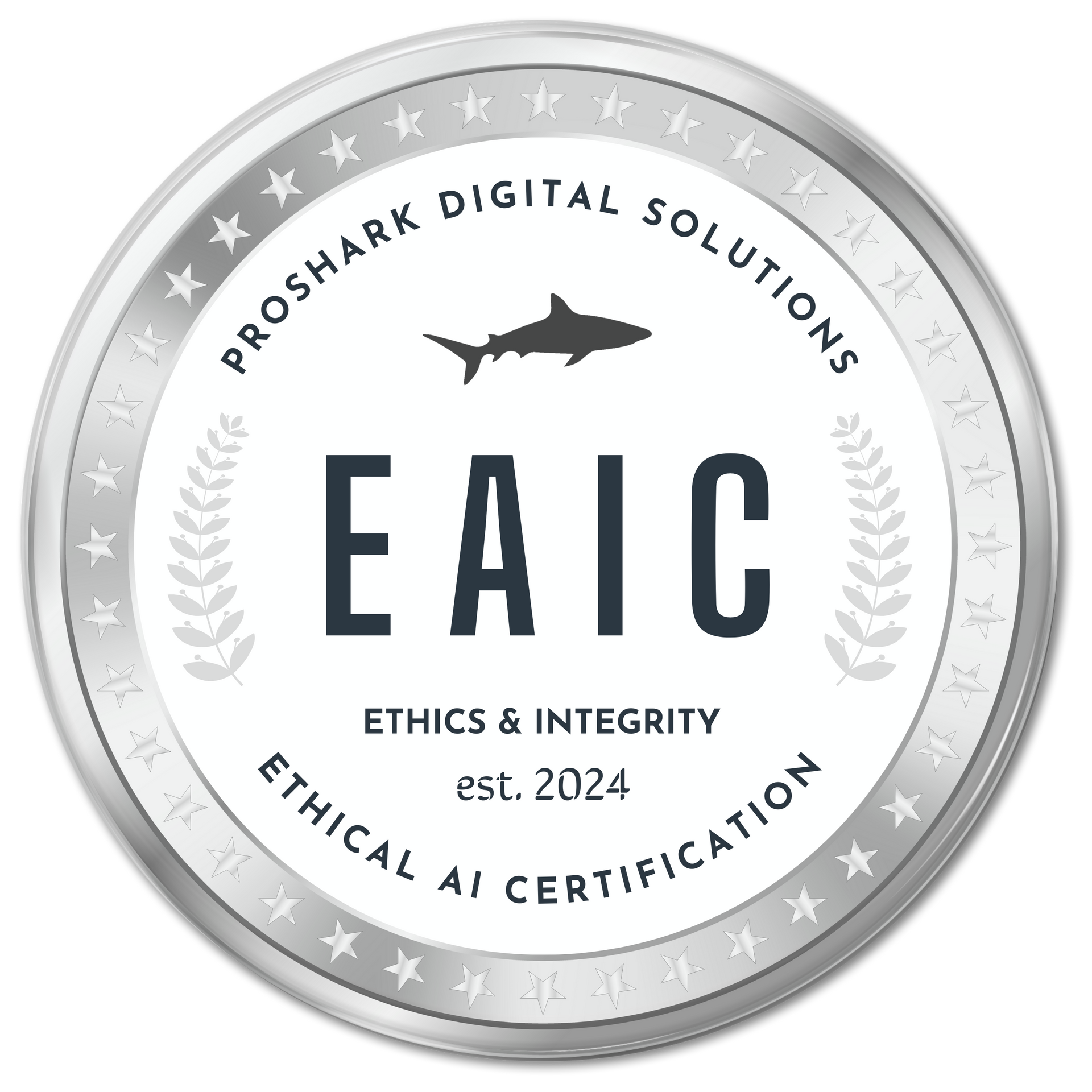Step-by-Step Digital Marketing Strategy Development for 2022
Create a MAP (Marketing Action Plan) and
In the course of a single month, business owners are bombarded with probably hundreds of marketing offers, suggestions and tips from digital marketing agencies just like ours. Are we wrong?
Doubt it. There’s no shortage of quick fix solutions and thinly veiled sales offers written in the language of marketing gurus and single service agencies.
You’re sick of it, we get it.
Here’s the thing though, you are like a general contractor. You’re the big cheese! The head honcho or honcha! You need to know what you and your staff are doing, or not doing, at all times or the house you built will fall down around your ears.
So, we’ve created this document to help you get savvy. There’s no way around it, so we suggest you just buckle up and take 10 minutes for this quick read. Why? Well…
Aren’t you sick of being taken advantage of?
Marketing is a skilled trade that moves at an accelerated pace. If you try to coast along for even 6 months doing what you’ve always done, the landscape can change and suddenly you’ve gone off the road completely. Worse, there’s always someone around to charge you a sizeable fortune to put you right again. Haven’t you had enough?
Understand the basics and spot the silver-tongued highway robbers.
That’s it in a nutshell. General contractors are not experts in drywalling, cement mixing and tiling, but they know enough to spot a good or a bad deal when they hear it. So read this, accept that you have to know it, and reach out to us if you have any questions!
Ready? Ok, great. You just decided to save yourself tens of thousands of dollars.
OVERVIEW
What is digital marketing anyway? Well, it’s the sweet, sweet mix of digital alchemy that makes up the soup that is your marketing strategy. It includes everything from email marketing to landing pages to social media strategy. Basically it is every method that people used to market themselves what seems like 100 years ago, including word of mouth marketing. Then for digital marketing, they just shoved onto the internet. This worked for a little while, but not so much anymore. We are betting that is what your bottom line says.
But it’s not just the final output. Digital marketing strategy includes a whole host of preparatory work that needs to be completed for the emails and social media posts to actually work. THIS is the part that most businesses fail to do when they decide to do their marketing in-house, without any consultancy at all, or they use agencies without a plan. It’s kind of like asking your staff to nail up some boards to make a wall, but the house has no foundation or flooring. You will stay dry (maybe) but you’ll quickly sink into the mud. And growth? Well, let’s just say you won’t ever have a second story.
PREP WORK
Competitive Analysis: Yes, yes, we know...now come the boring words that your eyes glaze over. We’ll make it quick, like ripping off a band-aid. Competitive analysis is looking at what the other guys are doing in order to stand out, not so you can do what they are doing!
This is a common misconception. “Just find a competitor and copy them.” Some marketers actually suggest this. Don’t do that. You need to have a Unique Selling Proposition, which means you have to stand above, not blend in with the crowd. Typically, this is where a SWOT analysis comes in. A good marketer will assess your unique Strengths, Weaknesses, Opportunities, and Threats in your particular vertical, so you can create messaging that speaks to your unique value.
State of Brand Analysis: Here’s another one that business owners overlook. We promise this is not just a make-work task. It is essential for a marketer to know where to start. In essence, if a digital marketing firm has not audited your social media, read your customer reviews, taken a deep dive into your social media and email metrics, how can they assess your brand?
Analyses should assess the difference between who you want to reach with your marketing and who you are actually reaching, and what the response is. If your brand is a person, a marketer should be able to tell you what that person’s actual character is, rather than who they think they are. It’s kind of a big deal.
Industry Benchmarks: Right, so after assessing where you’re at, you need to know where you are going. What’s the context of your success? If you believe you should be profitable with an email list of 2,000 leads, what’s the basis of that assumption?
A good marketer will be able to tell you that in your industry, you need to reach a certain level of production, distribution, sales calls, asset creation, almost everything you do needs to reach a certain threshold before you can sit back and watch the Benjamins accumulate.
Target Market Analysis: Oh, the warlike language! The militaristic “campaigns”! The overtly aggressive language of marketing! Have you ever wondered why marketing language is so warlike? Well, that’s because of the advertising men and women who returned from the second world war and got jobs on Madison Avenue in New York City, and approached the new “television in every home” reality like they were invading armies in people’s homes.
The actual war is for people’s attention. How could they interrupt your day, and invade your time? The truth is, it is the same as it has always been and not much has changed. You still need to find a “way in” to people’s hearts and minds, but these days it’s more about what particular group of people you care about. As a business owner, asking how you can help your customer while adding value to their lives is what the new marketing is all about,
Understanding all of the above (Competitive Analysis, Brand Analysis, and Industry Benchmarks) is essentially understanding where you are coming from, and who you should target with your marketing copy and strategy.
Customer/Client Avatar Development: Most business owners we work with roll their eyes at this part…that is, until we actually sit down with them and build out an in-depth profile of their ideal customer or client.
Think of it in the context of real life. If you have a roommate, you don’t know much about, you never talk to them about their personal lives, and in your head, they just exist for the sole purpose of paying your rent...how much warmth and friendliness is there when you interact? When we are face to face with another human, we understand the importance of showing an interest in who they are, so we can form a stronger connection. For some reason, when it comes to the people who actually help you pay your mortgage and put your kids through college, there is a resistance to knowing them deeply. Let that go. This is non-negotiable. If you are blasting out content without a crystal-clear picture of the people reading your content, you’re operating in a vacuum because nobody is listening.
Market Pricing Comparison: This is an easy one, but let’s just reiterate that a good digital marketer will be able to tell you who else is in your industry, what they are charging for their services or goods, and why you should be on par with them or possibly even radically higher or
lower than them, based on your USP.
Unique Selling Proposition: We’ve alluded to the USP already, but it’s the thing that sets you apart. “Excellent customer service” is NOT a USP. If it is something that everyone in every industry should be doing and, even if they were (which they aren't), excellent customer service is not a Unique Selling Proposition.
An example of a unique selling position for a yoga studio, for example, is offering free daycare for parents who wish to take their morning class. It is clear, it has value, it is simple, and it makes that yoga studio stand out as being particularly valuable to a certain group of people. Most importantly, it is something other yoga studios most likely don't offer. Another type of USP is a pizza company who says, “30 minutes or it’s free.” That kind of guarantee sets them apart from another pizza company who says, “Ready and hot in 30 minutes or less.”
A good digital marketer will work with you on what you can offer as a USP, because 95% of business owners do not actually have one!
OWNED MEDIA
A lot of the above is intended to optimize your outgoing messaging, as in your emails and social media posts. That is not owned media, and it could also be paid media. But what happens with incoming traffic that arrives on your site, which is owned by you? Are you able to convert leads once they land on your website? And the website itself, is it working for you or is it just sitting there in the digital stratosphere, waiting for YOU to send it traffic?
The following are a list of strategies that any digital marketer should have up their sleeve. A comprehensive strategy includes the following tweaks and boosts.
SEO: The number one way you can make your website work FOR you, rather than you working like a dog to send traffic to it, is Search Engine Optimization. The goal is to have your website as the very first result if someone searches for the type of products or services you offer. Most people understand this much, but it’s important here to list the types of actions that a good digital marketer will recommend:

Page titles: When looking for a page, a search engine such as Google will compare the title of the page to that of the requested search. Therefore, your page titles should be accurate. Don’t attempt to be ironic or funny, just give the engine, and therefore the potential lead, exactly the information that they are looking for.
Meta tags: A meta tag is the summary of the page that is shown in the search engine underneath the page title. It helps the search engine determine whether or not the information they are looking for is there.
URL: The URL for every page on your site should be short but descriptive. The permalink should not contain random characters, symbols or random numbers such as 3498. Search engine robots view this as gibberish and will ignore these types of URLs. Also, your website's directory structure should be simple and easy to navigate.
Optimized use of images: The name of an image, along with the "alt" attribute, tells the search engine what the image is about. If a visitor is unable to access the images on your site the "alt" attribute will display text instead. This gives your page a boost and every image can provide extra keywords which enrich your page content in the “eyes” of search engines.
Appropriate heading tags: If used properly, heading tags really help your website's overall organizational flow and also tell readers when a topic transition is occurring. Trick here, they have to be used properly and they have a clear hierarchy.
Site Health Analysis: Various diagnostic tools exist online that a good digital marketer will make use of, such as heat map apps that can tell you what people do when they land on your homepage.
Google Analytics is another great tool that tells you what the most popular page or blog on your website is, how long people stay on that page, and host of other important information such as who the visitor is, what their age is, where they are located and so on.
Bounce Rate is one of the most important metrics for you to know, for example, as it tells you how many people check out your homepage and leave without looking. You will want to know what percentage of people do this so that if you make changes to your homepage or menu, you will see a positive change in this area over time.
User experience recommendations: Once the overall site health is analyzed, a good digital marketer will make recommendations according to their findings. User experience isn’t a loose explanation of how a marketer “thinks” and user “feels” when they are on your site: it is a data driven recommendation for how to improve your website’s structure so your visitors actually find what they need and you make a sale (aka “conversion”).
Typically, recommendations are along the lines of “less is more,” and you will be asked to simplify your menu options, categorize your site content differently, and also upload smaller images so that your pages load faster, or use a slightly different color palette or font so that your website is easier to read.
A huge recommendation of the past few years is to become “mobile first,” which does NOT mean “you can read the site more or less online.” Mobile-first means that the experience of your website on a mobile device is completely different.
Content is adapted to the format of a phone or tablet. Often this means simplifying your copy even further so your visitors don’t have to scroll forever to get to your footer, removing non-mobile-friendly content such as PDFs and tables, and a host of other recommendations.
Conversion optimization recommendations: Yep, this is the good stuff. Show me the money, right? Your website should automate sales as much as possible for you, otherwise we’d be doing business like we did in the ‘80s, with a notepad, a rotary phone, and a Rolodex. Remove yourself from interactions with your customers as much as possible (while still being intimate and human-centric in your marketing....yes, it’s a paradox. We’ll get into that later).
If you can reduce friction, and capture impulse buys, even if the goal is just to get an email address, your website is working for you. In order to optimize conversions, solid digital marketing will suggest interactive features such as allowing your visitors to schedule a call with you, an ecommerce section for your site to sell digital content, or lead capture forms such as the one you filled out to obtain this stellar document! (Wink wink!)
Traffic capture system layout: This is where a good digital marketer will break out the big guns. Imagine that your website or landing page is the body of an octopus. Working out all the arms of the octopus and explaining to you why each arm is in each separate touchpoint (ie. Facebook, billboards, flyers) and how traffic is funneled from that touchpoint to the correct page on your site, and what then happens once they are on your page...this is the magic of digital marketing. A beautiful, sensible, automated system. Let them come to you! It’s an ambush. Hopefully it’s a love-ambush, but when it comes to conversions, the ambush is the most important part, scarily enough.
STRATEGY
After all the above prep work and analyses, a strategy is born. Once a digital marketer knows your business inside and out, they can make tailored recommendations that fit your needs. Believe it or not, some businesses shouldn’t bother with things like tv or radio ads! True story. Some should focus on email marketing. Yep, you read that right. Most agencies may not be able to fulfill some of these channels, but a good digital marketer will still identify the need and a great digital marketer will fulfill those obscure channels for you.
However, there are digital recommendations that are based around the following areas of focus:
Platform recommendations: As alluded to above, not everyone needs a Facebook Page or Group.
Some might only need a Group, and maybe Facebook isn’t the best place. Maybe one of the newer virtual communities are better for you, such as Mighty Networks or even Clubhouse. TikTok has surprisingly been a huge boon to the trades and manufacturers...something very few people are aware of, but a good digital marketer will know about this trend.
Email platforms are all different too. Some, such as MailChimp, do not have a very beautiful visual approach, but FloDesk is known for having exceptionally useful tools for creating astonishing beautiful emails. Klaviyo is a powerful tool, as you can automate email marketing flows, and they also have an SMS component so you can start texting your customers
A good digital marketer will be experienced in all of these and more, including podcast production, video editing software, and even tools to easily syndicate your content across multiple platforms.
Content posting recommendations: Part of your “tech stack” should include apps that improve your workflow. If you are still creating a piece of content, then opening up multiple tabs, posting natively to each platform, not really scheduling anything...you should probably talk to a digital marketing consultant, like, yesterday. Imagine how much more money you would make if you could work 6 days a week? (Ok, let’s be honest, most business owners work 7 days a week, but you get our point...imagine an 8-day week.)
Posting on one platform that will publish to multiple platforms could easily give you an entire extra day every week, in terms of hours of labor saved. If you’re paying staff to do it, even more reason to save the time!
Content marketing: Who you should be helping with your products and services and how you are capturing their attention is the entire point of your content. Most companies never move past the “inform” stage, and simply tell their audience about boring updates to their business, like a new staff member or a new piece of furniture in their office. BORING.
Many businesses just post about their products, and they think people will be interested enough to click through. Nope! It simply doesn’t work like that, not anymore. People are searching for search terms related to their lived reality. How do I make more money? How do I have kinder kids? How do I make my wife like me again? People are dealing with some serious personal problems, and if you can’t help them with these larger life questions, they are not going to be interested in you.
A good digital marketer will provide you with Blog Topic recommendations and Email campaigns that speak to the pain points of your audience. They will explain how to treat your readers like people, not like potential customers.
Ad budget recommendations: Here’s a giant hint, have one! Simply have an ad budget! It is phenomenal how many times we come across businesses who simply have not accounted for paid advertising at all in their business plan. (Actually...many don’t even have a business plan!)
Most people don’t have a budget, probably because subconsciously, they know this is where they could waste thousands of dollars...sometimes thousands of dollars a day. Should ads be spent on Facebook boosts? Facebook ad campaigns? Google ads? Google AdWords? Influencers? Affiliate marketers? There is no one answer to these questions. It depends on your business and your resources, such as available staff and production capacity.
Ad targeting recommendations: Ad targeting just isn’t what it used to be. There are changes and trends happening all the time, and social media platform changes such as the iOS.14 update which eviscerated interest targeting on Facebook and Instagram ads, and the iOS.15 update which eviscerated engagement tracking via email marketing.
A good digital marketer will know what platforms and strategies are currently useful and possible and will keep you informed of changes as they occur in this world.
Ad creative recommendations: So...most ads are terrible. Right? You’ve seen them. “I have a thing! Here it is! You can buy it, it’s on sale too!” Snoresville. Good ad creative tells a story, and it’s a story about your audience, not about your product. After working with a good digital marketer, all kinds of stories will emerge from your current audience and from your own memory and creativity.
This is often a collaborative process, with content ideas unleashed by savvy probing and instigating by the marketing consultant. Sometimes these ads can be video, sometimes the ads are simply long-form ad copy recommendations. A story can be told in many different ways.
Landing page recommendations: Not every business, but 90% of businesses will hugely benefit from multiple landing pages. You can have hundreds! Most businesses don’t even have one. A landing page is not a page on your website. Sometimes called a “splash page” or a “squeeze page” it is designed to funnel traffic into a list for email or SMS marketing. Often when you land on a landing page, there is only ONE call to action. Well, two...you can either close the page or fill out a form.
The form could be a request for an estimate, booking a meeting, or subscribing to a list, but usually it isn’t a link to another page. The value of a landing page is that your visitor becomes a lead. This means they do not click a button and read MORE content on your site: they do not leave the page unless they actually give you something in return, and that something is data. Capturing Email addresses are the most common goal of a landing page. Email addresses are called leads, and they remain leads until they are converted to customers. We have WAY more to say on this process below.
CUSTOMER JOURNEY ANALYSIS
We’ve alluded to it lots, but to reiterate: the big guns, the main thrust, the...ok that’s enough of the toxic masculinity rhetoric...the largest gift? Ummm….still awkward...ok, the greatest gift that a digital marketing consultant can give to you is crystal clear explanation of how your audience moves through your various channels and becomes a customer, rather than just a lead (or worse, just a visitor).
Top of funnel page value: When people discover you, they are considered to be “cold” traffic. Let’s pretend these are the people at the tip of the octopus’ tentacles, and they are just feeling you out, seeing how much further they wish to know about you. A good digital marketer will be able to recommend the copy, graphics and call to action for your landing pages, OR identify whether top of funnel traffic is totally happy converting via your homepage (usually not).
Behavioral tracking and value analysis is how a digital marketer will determine whether the top of funnel page is working to turn your visitor into a lead, by successfully capturing their email address. In rare cases, the top of funnel traffic converts straight into a customer and skips the process of becoming a lead. But for the most part, this requires prior knowledge of the final product...like if Obama were to offer a one hour one-on-one public speaking session for under $1000, he would be just fine with cold traffic.
Customer trend identification and mapping: Most businesses need to learn and grow and tweak and relearn and grow...it is a data-driven, incremental process that requires testing and retesting. Sometimes changing just one single word on a landing page will alter the conversion rate by a percent or two.
A good digital marketer will assess what your visitors actually do on your landing pages and will be able to map their journey for the purposes of keeping them on the page longer and directing them to accept the call to action.
Channel effectiveness analysis: When you first publish a landing page, you usually promote it across all your social media channels and email and TikTok and from your homepage and on and on and on...eventually, you will want to know which is the most effective means of promotion. As in, “Hey, nobody who got to this page via Twitter converted, but 5% of the people who came here via Facebook did convert. Henceforth, I shall increase my promotion efforts on Facebook! Hurrah!” That kind of thing.
Attribution analysis: The only way you can really know how someone landed on your page is that you tag ‘em. Yup, like a goat or a sheep. Tag ‘em and bag ‘em, as we say in the biz. (Ok, fine, we don’t really.) A tag is like a unique signature that is only useful if you have a robust CRM or Customer Relationship Management tool.
In Intercom, for example, you can see how long a customer has been with you, what their average order is, what their overall order value has been since the dawn of time, and any other attributes that you set up, such as “opened email about losing weight.” Sometimes these attributes can also be UTM tracking info, such as, “first discovered us via Facebook ad.”
KPI ANALYSIS
And here we get to the “good to have” metrics, that make you all warm and fuzzy and your staff all pleased and satisfied, and every stakeholder basically pleased as punch. Are you growing over time? Yes, usually. But a good digital marketer will be able to tell you how and why. KPI stands for Key Performance Indicators, and they vary for each business, but generally touch on the following:
Social lift analytics: Vanity metrics are, for example, Facebook Page Likes and Instagram Follows, and generally they don’t mean anything. However, if a potential customer is assessing your business versus “the other guys,” and you have 600 followers and they have 6,000 followers...you do look like you are less on the ball, less established, and less trustworthy. It’s still important to slowly grow over time, and this is a fact that isn’t going away anytime soon.
Website traffic: As with vanity metics, it’s important to know how many people land on your site, so you can track performance over time. Not all of them convert, but if the trend is good, you can at least feel good about the direction and focus on conversion if that is where the snare is.
CVR (Conversion Rate): Usually, this is the most important KPI that a business owner wants to know, and we are assuming you know what this means. How many people land on your site and then decide to pull out their wallet and give you their hard earned dollarbucks? This is CVR. Usually a healthy CVR is around 10%, but it really depends on the industry.
CPA (Cost per Acquisition): Beware the CVR without also assessing the CPA! Imagine that you are spending $40 on Facebook ads just to get one person to purchase your item that is worth $60. After you account for staffing, shipping, and all your overhead expenses, you are probably losing money on that item. Therefore, a good digital marketer will say, “Heyo, don’t spend money on ads for that product. Bundle it with some other products, mate, or you’ll lose the shirt off your back.”
As a general rule of thumb, your CPA should be less than half the value of the item you are selling. An eternal rule of business is, the person who spends the least amount of money to acquire a customer, wins.
CPC (Cost per Click): This is where some of that acquisition cost comes in. CPC or Pay-per-click is an advertising model in which you, as a business owner, pay a publisher (such as Google) when your ad is clicked. Usually this is for top-of-funnel traffic, such as Google Ads or remarketing campaigns...it’s basically the digital form of interruption marketing and it’s going out of style in a big way, in favor of good content that gets organically shared.




